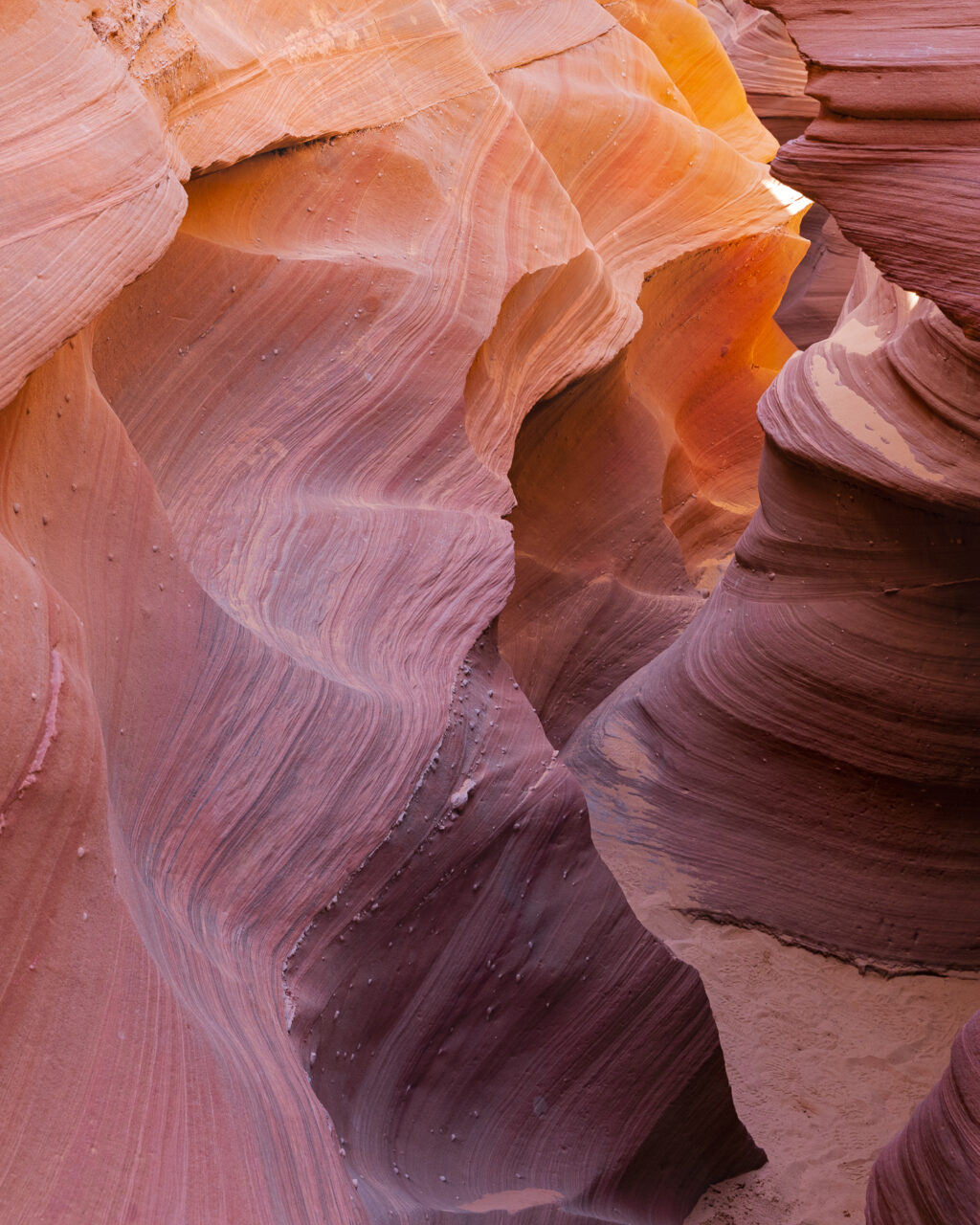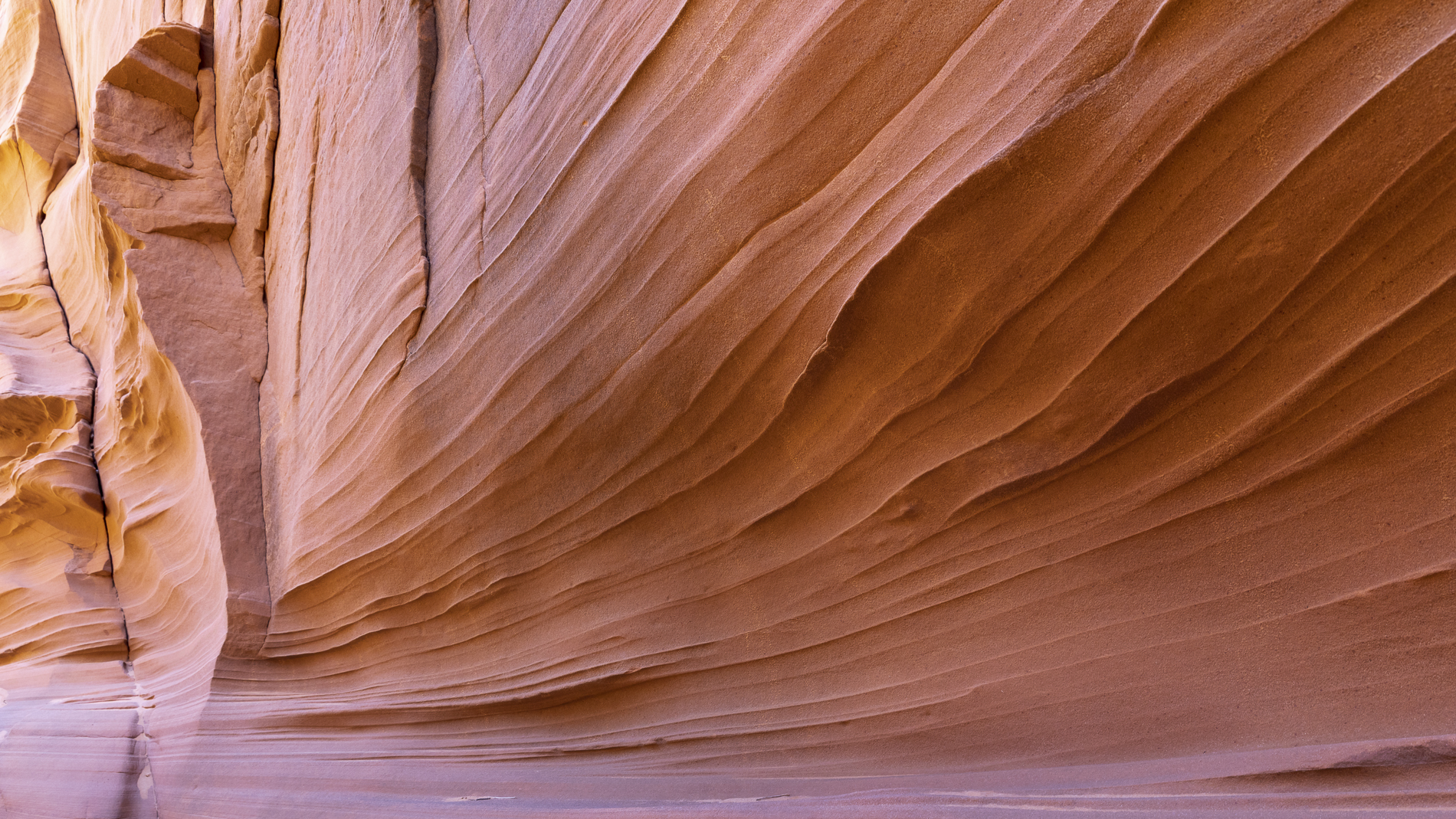Page, AZ
Southern Utah and northern Arizona have the densest concentration of slot canyons in the world. Located near Page, Arizona, Water Holes Canyon is one of the many must-see slot canyons in this region. Part of a drainage system located several miles from Page, Arizona, the canyon runs from east to west, passes under Highway 89, and ends at the Colorado River.
The canyon divides into two sections: upper Water Holes Canyon is a non-technical area east of the bridge at Highway 89, and lower Water Holes Canyon is a technical area requiring gear and a permit from the Navajo Nation. Due to its increased popularity and a rising number of rescues in the lower parts of the canyon, the only way to access the canyon is with a tour guide through Water Holes Canyon Experience. Prior to May 2018, hikers needed only a tribal permit from the Navajo Nation Parks and Recreation to explore the canyon on their own.
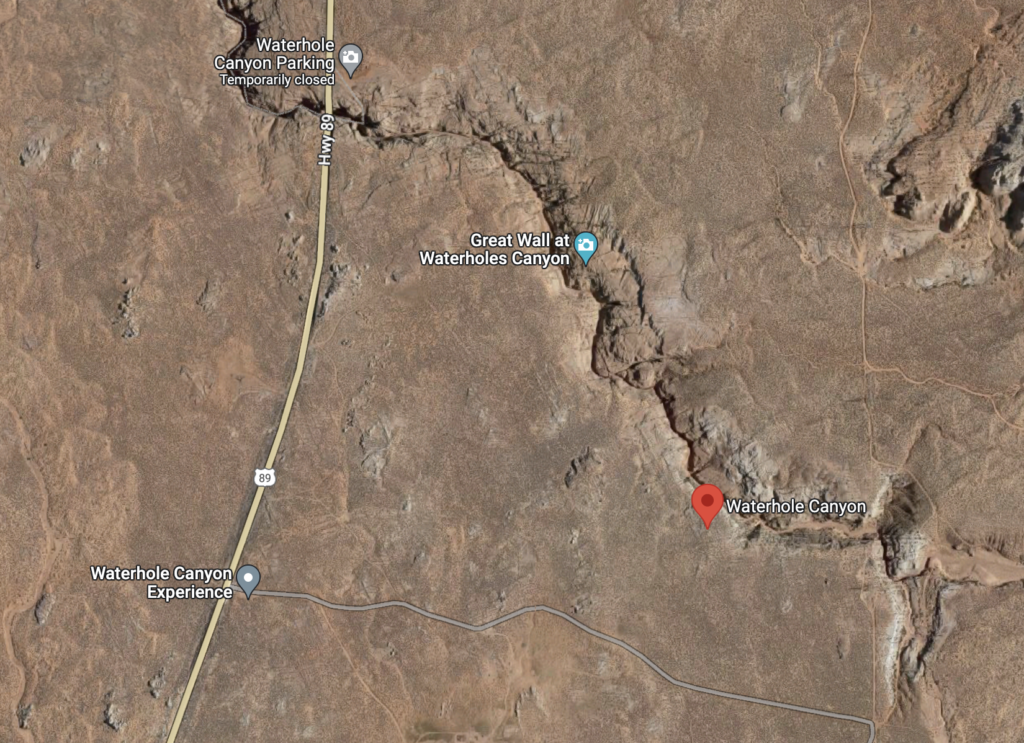
We visited the Water Holes Canyon Experience on the final day of our travels. Until that day, this canyon was unknown to me. I’m familiar with Arizona’s slot canyons, having visited the better known Antelope Canyons, closer to Page. WCE (Waterholes Canyon Experience) was opened more recently and offers the benefit of far smaller crowds, for now.
Water Holes Canyon is longer and wider than many of the slot canyons, with a number of open areas, more exposed to the sky. Generally, it receives more direct sunlight than Antelope and other canyons. Nonetheless, there are many sections with narrow openings to the sky, resulting in the more desirable indirect lighting that creates a warm glow. Photographers like this!
This picture shows a section near the beginning of our walk through the canyon. The area is exposed primarily to direct sunlight, being that close to the entry to the canyon.
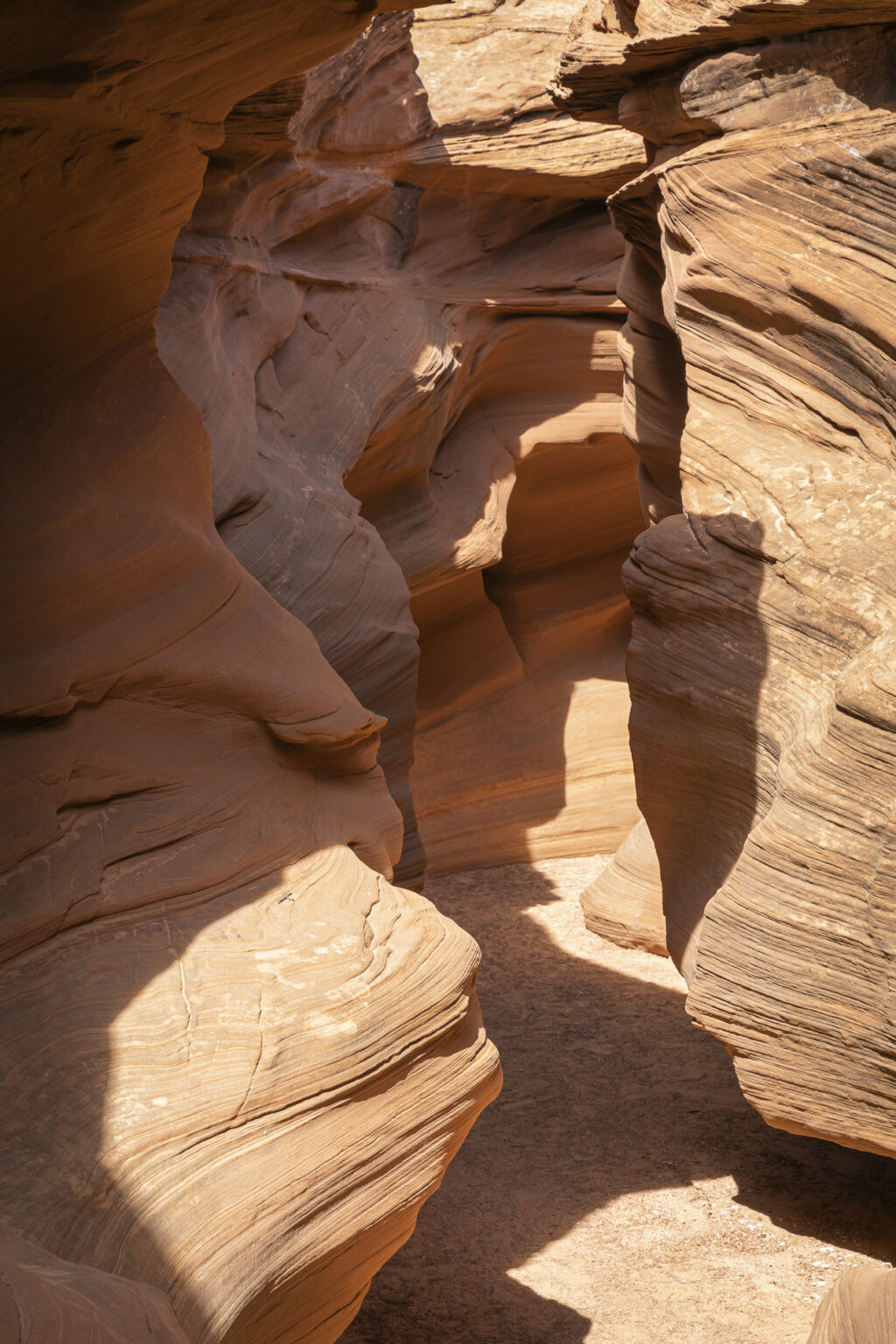
Moving along, we enter narrower, descending sections of the canyon. There are ladders and stairways to enable us to navigate the descents. These lower areas offer more vibrant colours and a pleasing glow, being less exposed to direct sunlight.
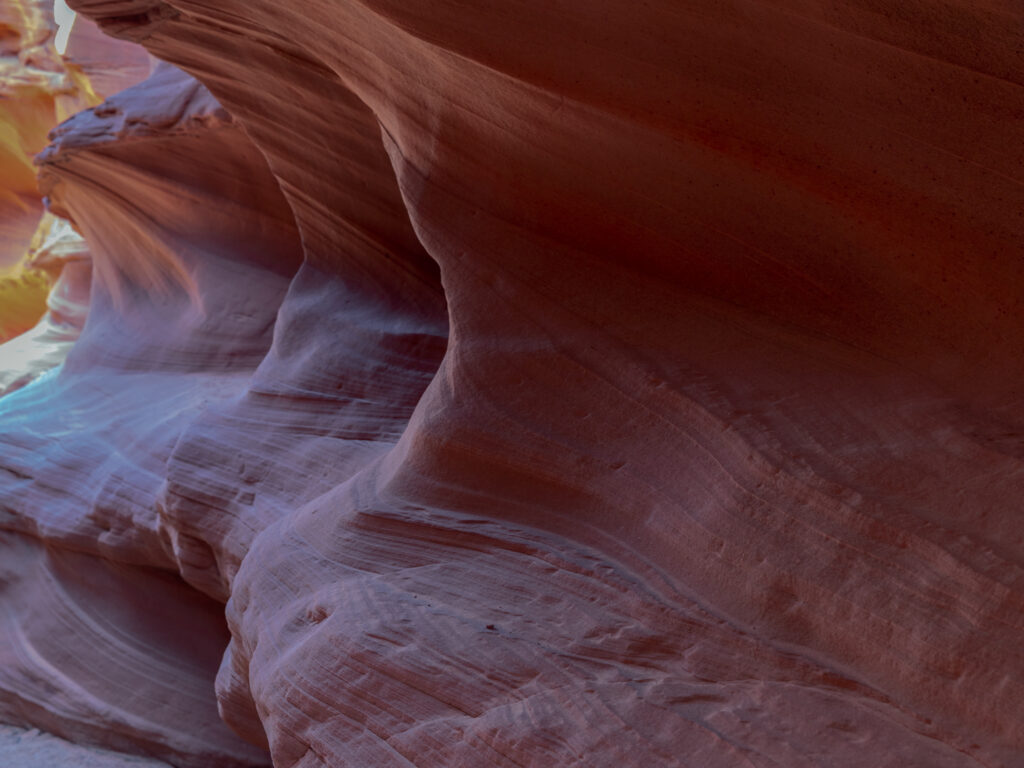
Following is a good example of Navajo Sandstone.
The Navajo sandstone is estimated to cover 400,000 km2 of the western United States and is found spread across the states of Nevada, Arizona, Colorado and Utah as part of the Colorado Plateau. The formation consists of thick layers of highly-angled cross-bedded sandstones. Sandstone is basically sedimentary rock composed of grains of sand, which are then cemented together by either quartz (silica), calcite, feldspar or clay.
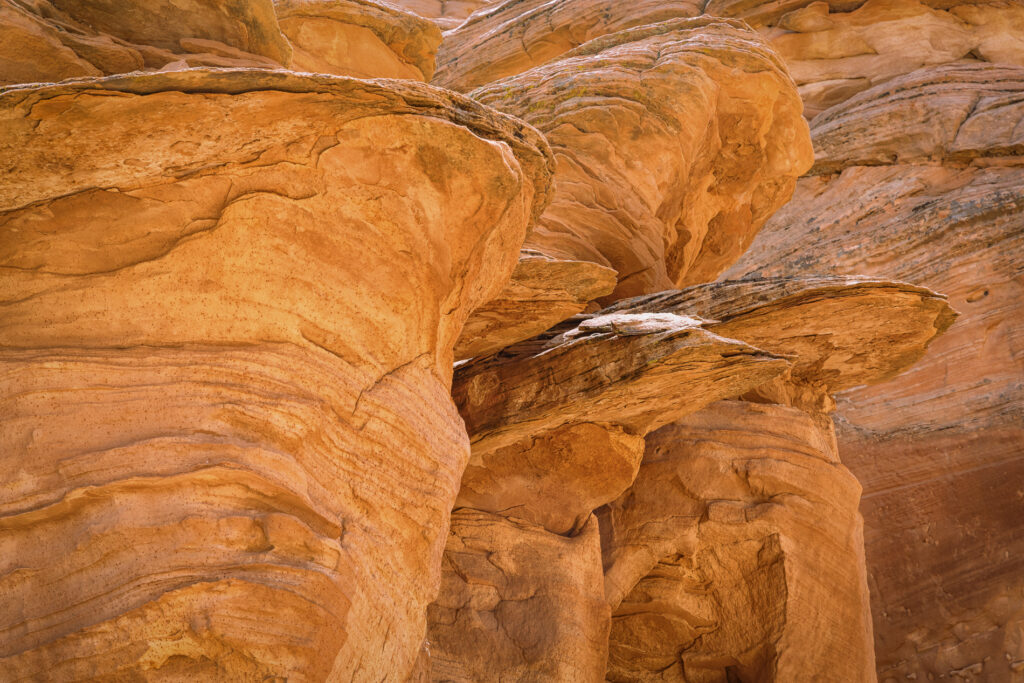
As we traveled along the canyon floor, we encountered some very narrow passages, so narrow we literally had to squeeze through. We also came upon some wide sections, very open, like we had just come outside. Passing through one of the open areas, I noticed this old tree, a great subject for a photograph. So here it is.
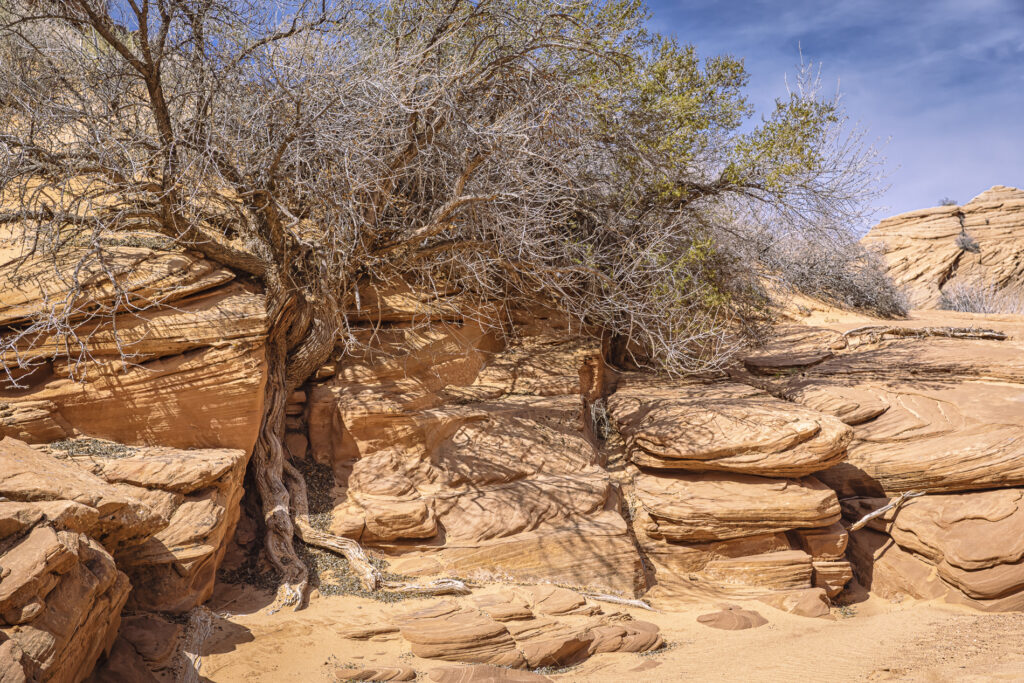
The next photo displays the effect of light reflecting off the canyon walls, creating the radiant colours. You can observe how its appearance differs from the small patches of direct light striking the rock toward the bottom of the photo.
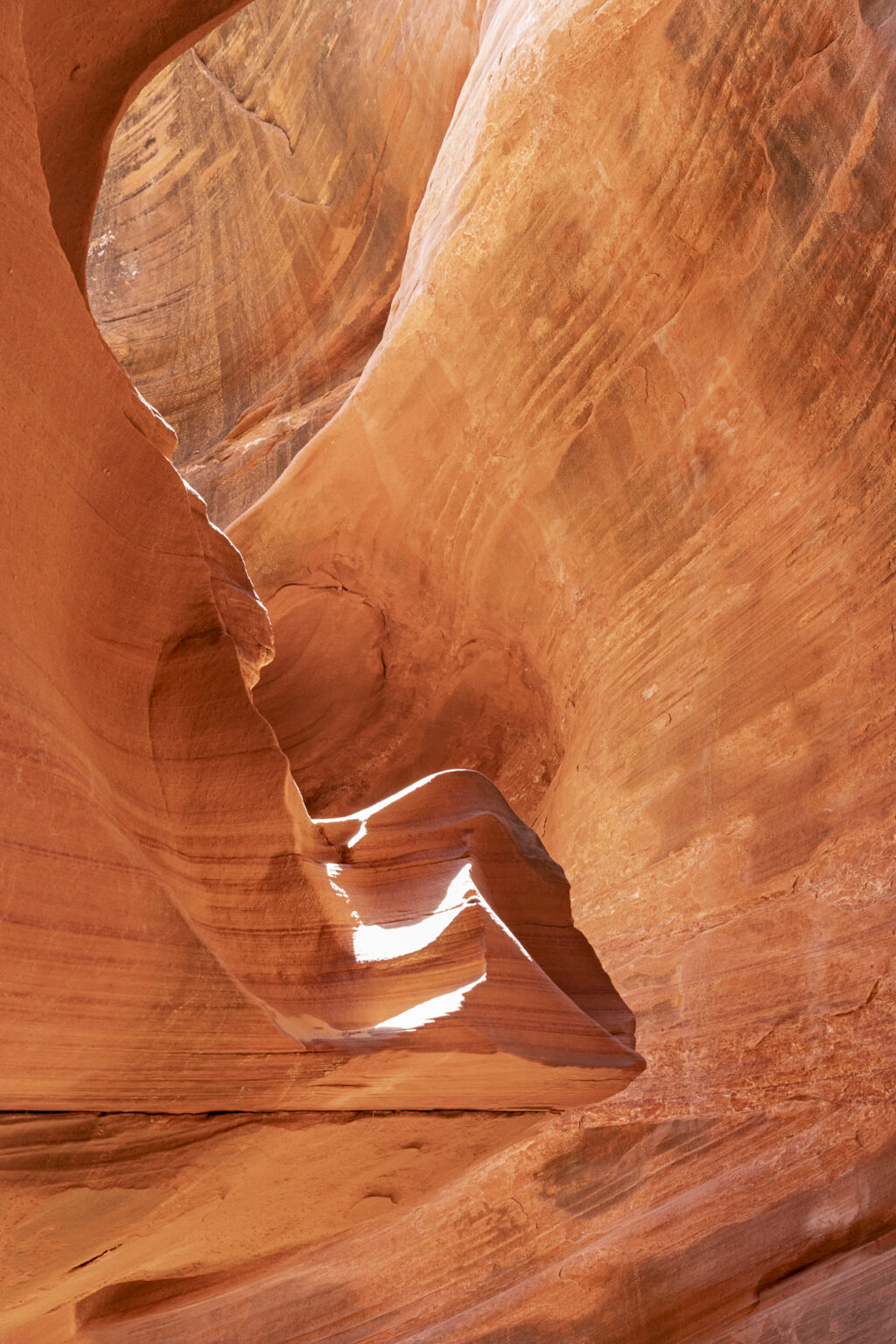
This is my favourite among today’s images. It shows the range of colours in the sandstone, from the oranges and yellows through the spectrum of reds and purple.
